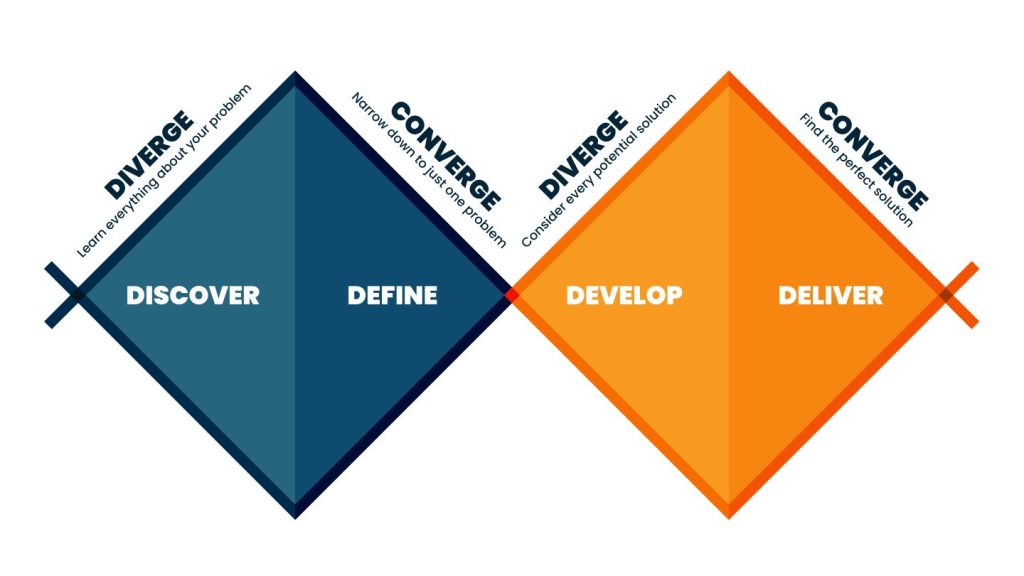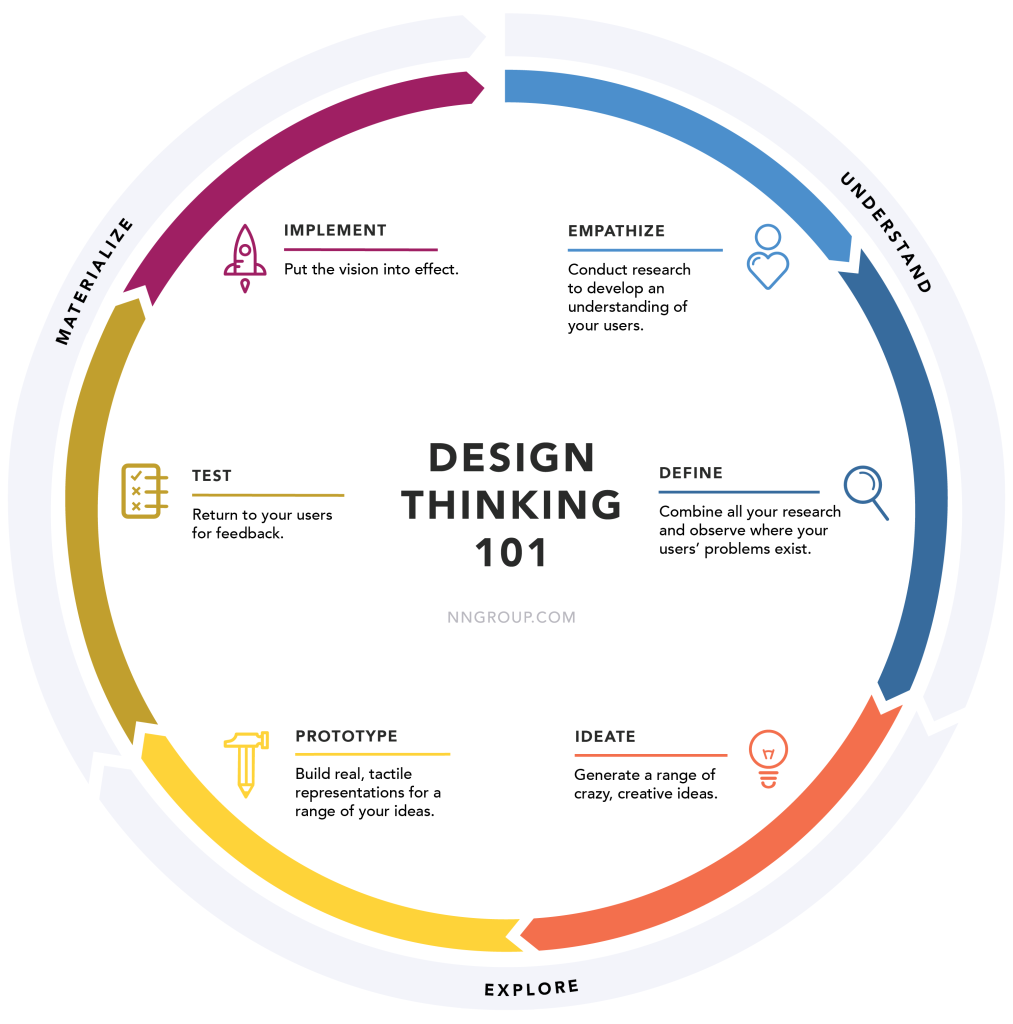The UX Double Diamond is a widely recognized design process model that visualizes the approach to tackling design problems. Developed by the British Design Council in 2005, this model is divided into four distinct phases—Discover, Define, Develop, and Deliver—organized into two main diamonds that represent the process of exploring an issue more broadly and then taking focused action.
- Discover (First Diamond: Diverge): This initial phase is all about understanding the problem that needs to be solved. Designers conduct research to gather insights and understand the needs, behaviors, and motivations of users. This stage is characterized by open-mindedness and exploration, with the goal of gathering a broad range of information and perspectives. Techniques such as user interviews, observations, and surveys are commonly used to collect data and empathize with the users.
- Define (First Diamond: Converge): After exploring various aspects of the problem, the next step is to synthesize the gathered information and define the core issues to address. This phase narrows down the focus to specific user needs and problems identified during the Discover phase. Defining the problem clearly and concisely helps set a clear direction for the design process. It often involves creating user personas, user journey maps, and problem statements to focus the design efforts effectively.
- Develop (Second Diamond: Diverge): With a well-defined problem in hand, designers begin to generate a wide range of ideas and potential solutions. This phase encourages creativity and ideation, exploring as many possibilities as possible without immediate constraints. Techniques like brainstorming, sketching, and prototyping are employed to develop and visualize solutions. The goal is to explore a broad spectrum of ideas before narrowing down to the most viable ones.
- Deliver (Second Diamond: Converge): In the final phase, the focus shifts to refining, testing, and implementing the best solutions identified during the Develop phase. Designers create detailed designs, conduct user testing to gather feedback, and iterate on their solutions to improve them. The deliver phase culminates in the final product or service that addresses the user needs and problems identified earlier in the process.
The Double Diamond model emphasizes the importance of both divergent and convergent thinking at different stages of the design process, ensuring that designers fully explore the problem space and potential solutions before converging on a final design. It provides a structured yet flexible approach to problem-solving, encouraging thorough research, creative exploration, focused problem definition, and user-centered solution development.



